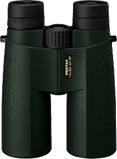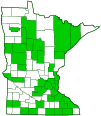Large crane flies
(Family Tipulidae)
Overview • Description • Distribution • Taxonomy
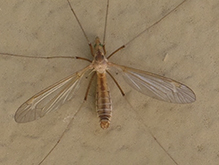
Overview
Tipulidae, called large crane flies, is one of the largest families of flies. There are more than 15,000 species worldwide, almost 1,500 species in North America north of Mexico, and at least 116 species in Minnesota.
Tipulidae are very common and very widespread, having been found on every continent including Greenland and Antarctica.
Larvae feed on decaying organic material either in water or in moist soil. Adults feed on flower nectar. They are found around abundant vegetation often near water.
Description
Large crane flies have very long legs and look like giant mosquitoes, but they do not bite. They are sometimes inaccurately called “mosquito hawks,” but they are anatomically unable to eat other insects.
Adults are ⅜″ to 1⅜″ (10 to 35 mm) in length.
There are two compound eyes but no simple eyes (ocelli). The paired, antennae-like, sensory appendages attached to the mouth (maxillary palps) have four segments. The last segment is very long, longer than the other three segments combined.
There is a distinct V-shaped groove on the plate on the upper side of the second thoracic segment (scutum).
On the wing the radius vein (R) has 4 or fewer branches, and 2 anal veins extend to the wing margin. The basal cells are very long, extending beyond the middle of the wing. On most species the discal cell is present.
Distribution |
||
|
Sources Biodiversity occurrence data published by: Minnesota Biodiversity Atlas (accessed through the Minnesota Biodiversity Atlas Portal, bellatlas.umn.edu, 10/20/2025). |
|
| 10/20/2025 | ||
Taxonomy
Order
Suborder
Nematocera
Infraorder
Superfamily
Tipuloidea (Typical Crane Flies)
Subordinate Taxa
Subfamily Ctenophorinae ![]()
Subfamily Dolichopezinae ![]()
Synonyms
Common Names
crane flies
large crane flies
Glossary
Maxillae
Paired mouth structures of arthropods located immediately behind the mandible and used for tasting and manipulating food. “Under-jaws”.
Ocellus
Simple eye; an eye with a single lens. Plural: ocelli.
Palp
Short for pedipalp. A segmented, finger-like process of an arthropod; one is attached to each maxilla and two are attached to the labium. They function as sense organs in spiders and insects, and as weapons in scorpions. Plural: palpi or palps.
Scutum
The forward (anterior) portion of the middle segment of the thorax (mesonotum) in insects and some arachnids.
Visitor Photos
Share your photo of this insect.
This button not working for you?
Simply email us at info@MinnesotaSeasons.com.
Attach one or more photos and, if you like, a caption.
Alfredo Colon |
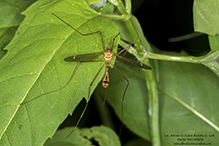 |
Charlie Heitzig |
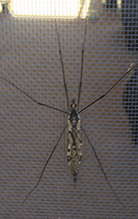 |
Luciearl |
 |
Resting on the garage door. |
MinnesotaSeasons.com Photos
|

Slideshows

Visitor Videos
Share your video of this insect.
This button not working for you?
Simply email us at info@MinnesotaSeasons.com.
Attach a video, a YouTube link, or a cloud storage link.
Other Videos
Crane fly, Tipulidae
Glen Warren

Visitor Sightings
Report a sighting of this insect.
This button not working for you?
Simply email us at info@MinnesotaSeasons.com.
Be sure to include a location.
MinnesotaSeasons.com Sightings
